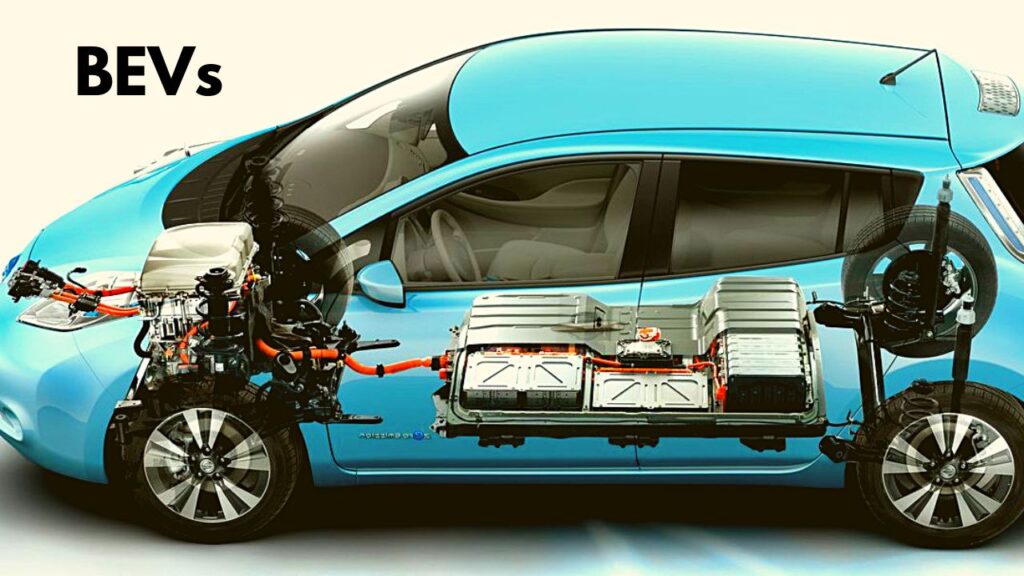In today’s rapidly evolving world, where environmental concerns are at the forefront of discussions, the emergence of battery electric vehicles (BEVs) marks a significant milestone in transportation. As advocates of sustainable living and cleaner air gain momentum, BEVs have become more than just a trend; they are the future of automotive technology. This comprehensive guide discusses battery electric vehicles, exploring their benefits, technology, market presence, and role in reshaping the automotive industry.
Table of Contents
The Advantages of Battery Electric Vehicles
Battery electric vehicles are a breath of fresh air, quite literally. Unlike their gasoline counterparts, BEVs operate solely on electric power, producing zero tailpipe emissions. This characteristic reduces the carbon footprint and plays a pivotal role in combating air pollution and climate change. According to recent studies, adopting BEVs could significantly reduce greenhouse gas emissions, making them a crucial player in the battle for a cleaner planet.
Cost Savings and Efficiency
One of the compelling reasons to embrace BEVs is their cost-effectiveness. While the initial purchase price might be higher than that of conventional vehicles, the long-term savings are substantial. Battery electric vehicles exhibit lower operating costs, thanks to the significantly lower electricity cost than gasoline. Moreover, BEVs have fewer moving parts, reducing maintenance requirements and expenses. Over time, these factors can make a noticeable dent in your wallet in the best way possible.
Silent Power and Smooth Performance
Imagine gliding down the street in near silence, the hum of a traditional engine replaced by the gentle whirr of an electric motor. BEVs offer a whisper-quiet driving experience, enhancing the driver’s and passengers’ comfort and tranquillity. Beyond the quietude, BEVs offer instantaneous torque delivery, translating to swift acceleration and a seamless driving experience. This surge of power, delivered without delay, can make your daily commute a truly exhilarating journey.
The Inner Workings: Decoding Battery Electric Vehicle Technology
At the heart of every battery electric vehicle lies the lithium-ion battery. These compact powerhouses store and deliver electricity to propel the vehicle. Through charging and discharging, lithium-ion batteries provide the energy required to power the electric motor and drive the wheels. The advancements in battery technology have led to increased energy density, extended range, and faster charging times, making BEVs more practical and appealing to a wider audience.
Regenerative Braking: Capturing Energy on the Go
Innovative technology sets BEVs apart from conventional vehicles. Regenerative braking, a feature unique to electric vehicles, converts kinetic energy into electric energy during braking. As the driver applies the brakes, the electric motor operates in reverse, acting as a generator to recharge the battery. This process enhances energy efficiency and contributes to an extended driving range, allowing each stop to maximize energy utilization.
A Growing Market: Battery Electric Vehicles in the Automotive Landscape
The adoption of battery electric vehicles has evolved from a niche interest to a mainstream phenomenon. Manufacturers and consumers recognise BEVs’ environmental and economic advantages, driving their integration into the global automotive market. Government incentives, improved infrastructure, and heightened environmental consciousness have all contributed to the growing popularity of these eco-friendly vehicles.
Expanding Charging Infrastructure: Powering the Future
The success of battery electric vehicles is intricately linked to the availability of a robust charging infrastructure. The transition to an electric future necessitates an extensive network of charging stations at home and in public spaces. Governments and private entities are investing heavily in building this infrastructure, ensuring that BEV owners have convenient access to charging options, thereby eliminating range anxiety and bolstering the appeal of these vehicles.
Challenges and Future Outlook
Range anxiety, the fear of running out of battery power before reaching a charging station, remains a prominent challenge for the widespread adoption of battery electric vehicles. While advancements in battery technology have led to increased ranges, the perception of limited mileage persists. Manufacturers and researchers are working tirelessly to develop batteries with even greater energy densities, alleviating range anxiety and boosting consumer confidence in BEVs.
Collaborative Efforts: Paving the Way for Progress
The journey toward a future dominated by battery-electric vehicles requires collaborative efforts from governments, industries, and consumers. Incentives, subsidies, and investments in research and development will play a pivotal role in accelerating the adoption of BEVs. As technology evolves, battery-electric vehicles will become more accessible, affordable, and integrated into our daily lives.
Conclusion: Driving into a Sustainable Tomorrow
Battery-electric vehicles are not just vehicles; they are symbols of innovation, progress, and sustainability. With zero emissions, cost savings, and remarkable performance, BEVs are revolutionizing the automotive industry. As the world unites to pursue a greener future, battery electric vehicles are a testament to human ingenuity and determination. Embrace the change, drive the revolution, and pave the way for a cleaner, more sustainable tomorrow.
FAQs
How do battery electric vehicles work?
Battery electric vehicles operate using electricity stored in lithium-ion batteries, which power an electric motor to propel the vehicle.
Are battery-electric vehicles expensive to maintain?
No, BEVs have fewer moving parts than internal combustion engine vehicles, leading to lower maintenance costs.
Can I charge a BEV at home?
Yes, most BEV owners charge their vehicles at home using a standard electrical outlet or a dedicated charging station.
What is regenerative braking in BEVs?
Regenerative braking is a technology that converts kinetic energy into electric energy during braking, improving efficiency and range.
How far can a typical battery electric vehicle travel on a single charge?
The range varies, but modern BEVs can travel anywhere from 150 to 300 miles on a single charge.
Are there government incentives for purchasing battery electric vehicles?
Yes, many governments offer incentives such as tax credits and rebates to encourage the adoption of battery electric vehicles.
